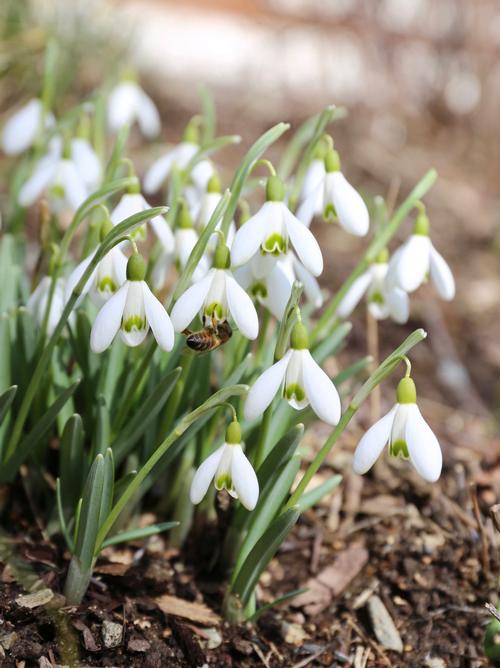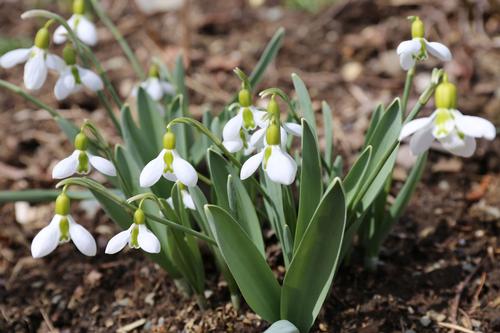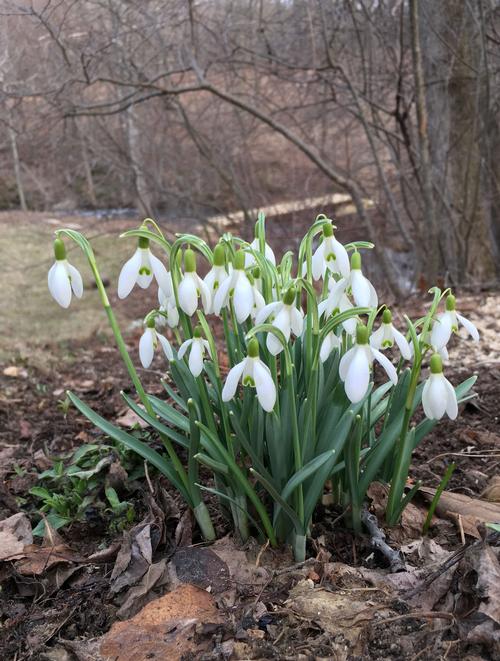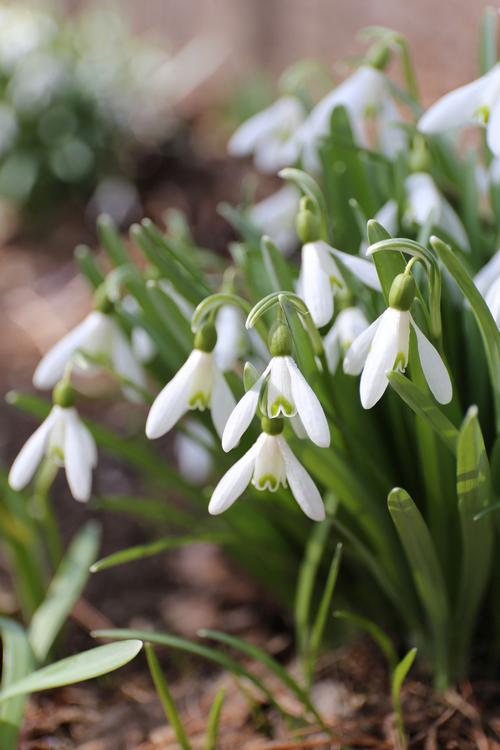
Getting to Know Snowdrops
The snowdrop’s Latin name is Galanthus, meaning milk-white flower. From a distance, all snowdrops look pretty much the same. But on closer inspection there are subtle variations in flower size, shape and markings. The most commonly available species are Galanthus nivalis and Galanthus ikarieae, but there are now hundreds of named cultivars. The introduction of new varieties is fueled by an active international community of snowdrop enthusiasts who refer to themselves as “galanthophiles”.
Each snowdrop bulb produces two or three long, narrow leaves and one stalk, topped with a snowy-white flower. The blossoms have three large outer petals (sepals) and three much smaller inner petals that overlap to form a tube that’s adorned with lime-green markings. The flowers dangle from arching, whisper-thin stems that allow them to bob to-and-fro in the lightest breeze. On sunny days, the outer petals rise and the blossoms look like they’re ready to take off.

How to Plant Snowdrops
Snowdrops may be planted as bulbs in the fall, or as plants, in the spring. The bulbs are small and should be planted 2 to 3” deep and 2 to 3” apart. For best results, purchase bulbs by mail for fall delivery and plant immediately upon arrival so they don't dry out.
In England, snowdrops are typically dug and divided in the spring, right after they finish blooming and are sold “in the green.” Here in the US, it's unusual to see snowdrops offered as plants. But if you can locate a gardener with a good amount of snowdrops, they may be willing to let you dig up a few clumps and transplant them into your own garden. Shop for snowdrop bulbs HERE.

Where to Plant Snowdrops
Snowdrops grow best in cool climates (hardiness zones 3 to 7). They enjoy full sun to light shade and rich, well-drained soil. Snowdrops are only 4 to 6” tall, so are usually planted in clumps to get a bigger impact. They can be grown beneath shade trees and deciduous shrubs, at the front of flower beds or in woodlands, stream sides and other natural settings. To get extra-early flowers, plant the bulbs on a sunny, south-facing slope.
Snowdrops are often combined with other early-flowering bulbs such as crocus, winter aconite, chionodoxa and scilla siberica. All of these bulbs are good naturalizers and will bloom year after year with little or no attention.

How to Care for Snowdrops
Like other spring-blooming bulbs, snowdrops use their foliage to generate energy for next year’s flowers. Resist the temptation to cut back the leaves or mow them down while they are still green. Within a couple weeks, the foliage will yellow and melt away on its own.
When snowdrops are growing in a location that suits them, the bulbs will multiply and can eventually carpet a large area. The bulbs don’t mind being crowded and rarely need dividing. If you want to move some bulbs to a new area or share them with friends, dig and divide them in early spring, right after flowering and before the foliage begins to yellow. Handle them carefully so the foliage stays attached to the bulbs, and get them back into the ground as quickly as possible.
You may find it takes a couple years to establish large clumps of snowdrops, but once the bulbs have naturalized, you will have flowers every spring for generations to come.
To learn more about early spring bulbs, read:
Bloom Time Chart for Spring and Summer Bulbs
Earliest Bulbs for Spring Gardens


